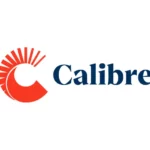Soaring inflation has increased prices for basic commodities like food, clothing, and other items necessary for modern living. Indeed, high prices driven by the highest inflation rates in nearly 40 years have kept many consumers from purchasing new items to save money.
As a result, big retail chains like Walmart and Target and smaller players in the retail sector have found themselves with far too much stock and not enough buyers willing to pay for them. Indeed, their inventory consists of clothing, appliances, and some big-ticket items that may well be considered white elephants in today’s economy.
But Walmart has taken up the challenge of drawing customers back in, specifically by slashing prices on numerous items while marking down the price of many products.
A Calculated Decision
The decision to offer substantial markdowns on several products was essentially influenced by how the rising prices of food and fuel have affected consumer spending habits throughout the first half of this year.
In a disclosure issued on Monday, July 25th, Walmart US expected around 6% in comp sales, slightly higher than the company expected from a diverse mix of food and other consumables that have adversely affected its gross margin rate. Food inflation, in particular, hit double digits in the second quarter; this further hampered the ability of most customers to spend a little more on non-food products.
As a result, Walmart resorted to marking down apparel prices in a bid to keep its inventory moving and was successful in the process. Throughout the second quarter, the company managed to set prices to reflect several supply chain costs as well as inflation. The company also reduced the cost of storage in light of the current backlog of shipping containers in ports throughout the country.
However, while lower prices and discounts are music to shoppers’ ears, they also mean Walmart and other retailers will earn considerably less in the process.
What’s Next?
In the same disclosure, Walmart also announced that it has reduced its profit outlook for the rest of 2022 as it expects customer spending on general merchandise to slow down in the second half of the year.
Likewise, Walmart’s value per share dropped by 8% the following day, July 26th.
The retailer’s disclosure also affected share prices for rival company Target and online competitor Amazon as both companies reported a decrease in their share prices following the announcement.














